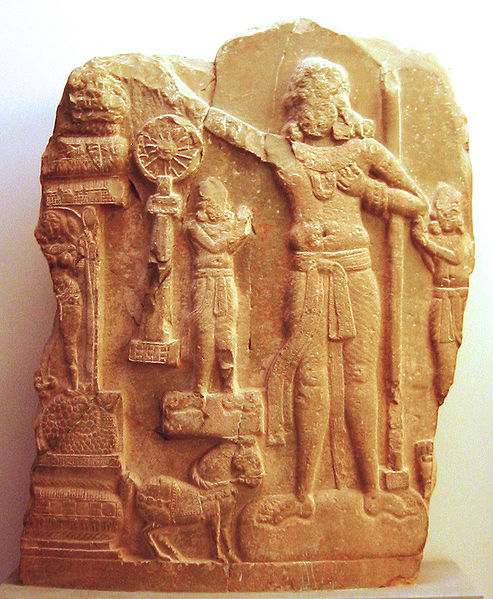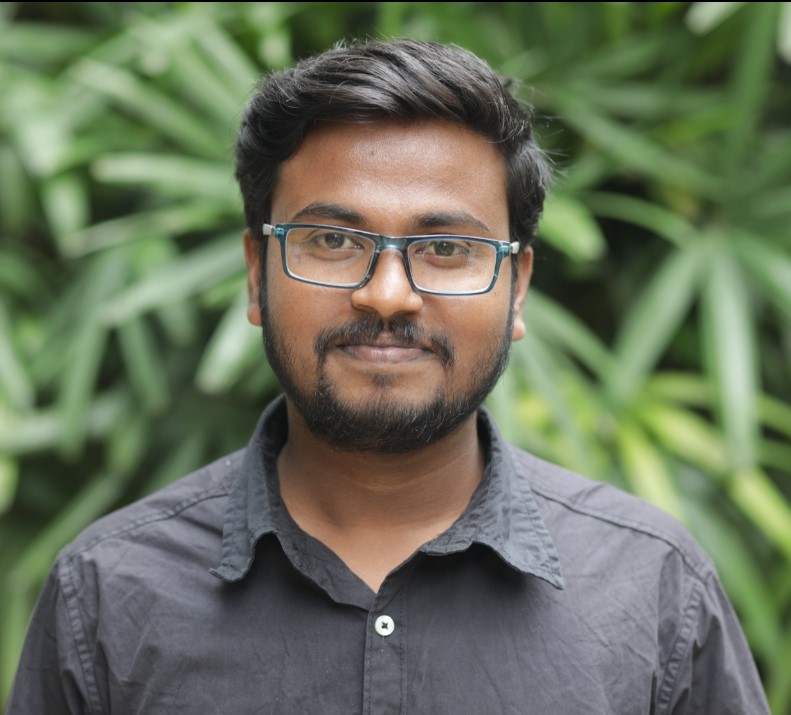Ratnesh Katulkar
 The decade of 90s had witnessed two landmark political movements, Mandal and Kamandal. The Mandal movement was based on social justice while the Ram Mandir roused majoritarian emotions of religious injustice. The supporters of Ram Temple agitation, despite their rightwing religious coating, have seemed to put forth one logical argument. They used to say that their movement is to correct an historical wrong. Their argument is that the Muslim invaders and rulers destroyed many Hindu temples including that of Ram’s birthplace. What is wrong in reclaiming those in a modern secular state?
The decade of 90s had witnessed two landmark political movements, Mandal and Kamandal. The Mandal movement was based on social justice while the Ram Mandir roused majoritarian emotions of religious injustice. The supporters of Ram Temple agitation, despite their rightwing religious coating, have seemed to put forth one logical argument. They used to say that their movement is to correct an historical wrong. Their argument is that the Muslim invaders and rulers destroyed many Hindu temples including that of Ram’s birthplace. What is wrong in reclaiming those in a modern secular state?
Unfortunately very few liberals, secularists and progressives responded to this argument. Their point was simply to preserve and nurture secularism in India without falling into debate of historical myths and truth. Thus to avoid any contradiction they tried to maintain the status quo. Some of the leftist historians in an attempt to counter this claim have taken great pains in showing Aurangzeb as a secular emperor who used to give grants to Hindu temples, a temple in Ujjain is said to be one such. Much before that Mughal Emperor Akbar’s Din-e-Ilahi and other secular attempts have gained credentials in mainstream history.
However, by keeping silence on the charges of Hindu nationalists, the much acclaimed accusation of Muslim attacks and usurpation of Hindu temples are accepted as a truth not only by the masses but also by the progressive intellectuals. In a recent article[i], Justice Markandey Katju not only accepted it but justified it by saying that ‘It is true that many Hindu temples were destroyed by Muslim invaders, and mosques built on their sites, sometimes even using the material of the temple. For example, the Quwwat ul Islam mosque near the Qutub Minar in Delhi has pillars with Hindu carvings, or the Gyanvapi Masjid in Varanasi whose rear wall has Hindu carvings, or the Atala Devi Masjid in Jaunpur. But is India to move forward, or backward? It would be a different matter if a Hindu temple is illegally demolished today and converted into a mosque. But where this was done allegedly 500 years ago, does it carry any sense to go about restoring the structure to its Hindu original?’
On the contrary, in Dalit-Bahujan discourse, scholars from beginning have never been defensive in their arguments but in fact had been offensive against the rightwing. Jotiba Phule in his Ghulamgiri and elsewhere showed how the Brahmin invaders violently attacked the indigenous masses, usurped their land and turned them into permanent slaves by labeling them Shudras and Ati-Shudras. Dr Ambedkar went on to search communal violence in ancient India and thereby concluded that the history of India is nothing but a mortal conflict between Buddhism and Brahmanism. He found that India has witnessed many violent communal onslaughts against the Buddhists.
The recent accidental excavation at the disputed site of Ayodhya once again revealed these facts. It is interesting that the BJP led governments in their respective terms and also at present is trying hard to search the traces of a mythical river, Saraswati. But none of the Indian historians are sincere enough to trace the history of India based on Buddhist scriptures. It was a British archaeologist Alexander Cunningham who traced India’s past through the writings of Chinese travelers and other Buddhist records. He took pains to explore the sites mentioned by Xuanzang. In his study Cunningham[ii] found that the present city of Ayodhya was originally called Saket. It has a great reverence in Buddhist texts and has been mentioned by Xuanzang and Faxian in their travelogues. According to Xuanzang, the Buddha spent six years in this city. The most famous female Buddhist personality Vishakha was resident of this city before her marriage to Purranaa Vardhana. Quite naturally, Saket drew the attention of Asoka.
He built a 200 feet large stupa which was preserved for a long time and had been described by Xuanzang. He also saw a monastery which is identified as Kalakadarma or Purvavadarma by Cunnigham. These monasteries were lost under debris of the present site of Mani Parvat. But this was not a natural process. The Brahmins told Cunningham that the monkey king Sugriva accidently dropped this mountain at this place which was used by monkeys to assist Ram. But this information was a mere brahmanic attempt to link this site with the myth of Ram. He received the other side of the story from the locals. They informed him that the mound was formed by the labourers shaking their baskets on this spot every evening on their return home from building the temple of Ramkot. This place is still called ‘Jhowa Jhar’ or ‘Ora Jhar’ which means ‘basket shaking’. There shouldn’t be the slightest doubt that this was a deliberate attempt by brahmanic forces to hide and conceal Buddhist heritage. Interestingly, this was not a lone incidence, a similar story is told about the mounds of Banaras, Nimsar and other places (Cunningham 2000: 323).
Saket had witnessed a constant struggle with Brahmanic forces and in this process its identity was lost and it was renamed as Ayodhya. The first massive attack on this city occurred with the usurpation of Magadhan empire by a Brahmin Pushyamitra Shunga. He killed the last Mauryan emperor Brihadratha and started a bloody communal campaign against the Buddhists. This proved to be disastrous for the nation. The Buddhist Viharas, which were the centres of mass education, were destroyed and the monks were killed by the Brahmanic goons. Terming this phase as a counter revolution, Dr Ambedkar writes, ‘How pitiless was the persecution of Buddhism by Pushyamitra can be gauged from the proclamation which he issued against the Buddhist monks. By this proclamation Pushyamitra set a price of 100 gold pieces on the head of every Buddhist monk’. He also quotes Haraprasad Shastri who said, “The condition of the Buddhists under the imperial sway of the Shungas, orthodox and bigotted, can be more easily imagined than described. From Chinese authorities it is known that many Buddhists still do not pronounce the name of Pushyamitra without a curse.”
The mainstream historians however, do not take any serious account of this event but the Buddhist scholars recall this incident with much grief. They have taken pains to trace the remains of this massive communal violence. One of the surviving evidence of this brutal act is traced by a scholar Shanti Swaroop Bauddh who narrates that the river flowing adjacent to present Ayodhya is known as Saryu. But before reaching the city and after crossing it, it was called as Gandak. He questions how come this river changed its name in this limited geographical region?
He decodes it saying that the ‘Sar’ in Pali as well as in local indigenous language means ‘the head.’ Taking this clue he came to the conclusion that Pushyamitra Shunga had ordered his men to behead the Buddhist monks and masses. The communal onslaught was so tyrannical that the bank of the river Gandak was filled with the heads of the Buddhists. This portion of the river thereafter began to be called as Saryu (‘full of heads’) in this limited geographical area. Interestingly, he said, the present Yogi government of Uttar Pradesh in an attempt to erase the marks of this communal violence has passed a resolution to rename Saryu river as Gandak. Not surprising that he is also following the age old brahmanic tactic of renaming cities of historical importance.
The Shungas’ attack was, however, not the only case of mass violence against Buddhists. Buddhism continued to become a target of Brahmanism even in later centuries. There were very few records of riots available in history but it is well known that the Huns (6th century) and kings like Shashank (7th century) followed the same communal onslaught against the Buddhists. Yet it is to be noted that the Buddhist religion, culture and civilization was so deep rooted among Indians that despite such communal attacks it was not easily and voluntarily replaced by the Brahmanic Hindu culture. This point is again ignored by the dwija historians. Mudraraksha[iii] and Gail Omvedt[iv] were the only two scholars who brought attention to it.
The biggest challenge before the Brahmins was the absence of any figure that could counter the widespread popularity of the Buddha. Therefore, the destruction of Buddhist sites and killing of Buddhist intellectuals and masses despite huge loss of human life and infrastructure had a limited impact. It only proved the militant dominance of Brahmanism but its social acceptance was yet to be proved.
Therefore, in an attempt to claim social superiority and mass acceptance, they devised new tactics. In order to create a central figure to counter the Buddha they created the legend of Ram in Saket renamed as Ayodhya, and Krishna in another Buddhist city of Mathura. A Brahmanic king Vikramaditya (Skandagupta) played a key role in creating artificial history of Rama in Saket. He mischievously followed Asoka—who revived all the sites related to the Buddha. The task of Vikramaditya was however not based on history but an attempt to create a false history. The city of Saket which already lost its name to Ayodhya was further painted with Ramaite colour.
The three great Stupas were renamed as Mani Parvat, Kuber Parvat and Sugriva Parvat to hide their identity. We have already discussed how construction of a temple of Ramakot had hid the Buddhist site under the debris of ground soil. There were many more temples constructed showing their relation with Ram. In an attempt to compete with Asoka, who built 84,000 stupas across India, Vikramaditya built 360 temples alone in Ayodhya. However, at that time this strategy also failed to make much impact. The obvious reason was that till that time the legend of Ram had not gained any popularity. The people were not in the habit of visiting Brahmanic shrines, as the Buddhists were practicing religiously at stupas. As a result, in the coming years the Vikramaditya’s attempt of recreation of Ram sites died naturally.
Alexander Cunningham observes that ‘by seventh century more than three hundred of the original temples of Vikramaditya had already disappeared and we may reasonably infer that the city had been gradually declining for some time previously. The Buddhist monuments however, would appear to have been in good order, and the monks were just numerous as in the eminent Buddhist city of Benaras.’
The continuous failure of the Brahmins to gain social acceptance for their religion finally forced them to bring revolutionary change in it. The biggest lacuna in Brahmanism at that time was that it does not have any central figure that can counter the Buddha, who was accepted and revered by masses across India and also in other nations. The recreation of the false history of Ram in Ayodhya miserably failed. The second stumbling block was their traditional and essential ritual of Yajna that involved mass killing of animals, particularly cows and oxen. The Yajna proved beneficial to Brahmins alone who were enjoying the surpluses from toiling mass but it was proving costly to the agrarian community.
The failure of Brahmanism ultimately forced them to imitate Buddhism. However, in original Buddhism (Asokan form of Buddhism), which involved mass education and social welfare there is nothing to imitate for the Brahmins. In fact, social awareness and welfare was contradictory to Brahmanism. However, they found hope in the emergence of Mahayana. This Buddhist sect provides a lot of opportunities to the Brahmins to imitate. The image worship of Buddha, the beautiful concept of Bodhisatva, chanting, and the lyrical worship of the Buddha (which was of course also popular in Theravada tradition) and vegetarianism provided a lot of opportunity to the Brahmins. They borrowed almost every ritual element of Mahayana and added to it their brahmanic flavor.
It was not an easy exercise; they had to conceal their own identity. They had no options left than to leave their own vedic deities of Brahma, Indra, Agni, Vayu, Mitra, Nasatya etc., and replace it with a human face to counter the Buddha. We had discussed that in this attempt they created two new human gods—Rama and Krishna. But realizing their mistake in Ayodhya where recreation of Rama had very limited impact, they now took a new approach of developing his biographical legend. Initially it was propagated only among the elite class. Probably they believed in the trickle-down theory. The Gupta period (320-550 CE) proved to be a classical age of Brahmanic textual creation. This is the reason why modern dwija historians term this period as a golden age. Rama was later popularized most during Mughal Emperor Akbar’s regime when a Brahmin of Ayodhya, Tulsidas, composed Ramcharitmanas, a biography of Rama in a local dialect. He left no chance to claim the superiority of Brahmins over the rest of the people in this book.
It thus took over two dozen centuries to replace the Buddha with Ram. According to a historian Julia Shaw[v], Ram became popular only during the Rajput period (12th Century onwards). Quoting a study of Bakker she said that ‘the contrived nature of the Ramaite landscape only comes out in the later recensions of the 15th and 16th centuries when these older sites become ‘Ramatized.’
Apart from one or two exceptions it is not until the 11th and 12th centuries that else- where in India, the first archaeological and textual evidence for an independent and widespread Rama cult emerges. Not surprisingly, therefore, apart from the still unconfirmed evidence for a 10th-century Rama temple at the Janmabhumi site, it is not until the 11th and 12th centuries that an argument for the first direct associations between Ayodhya and Rama can be made. Its rise to prominence coincided with the mass settlement of Rajputs (a princely clan from Rajasthan) in the area … Despite the subsequent archaeological hiatus until the 18th century following the Mughal ban on Hindu temple construction, it was during this time that Ayodhya developed into a Ramaite pilgrimage centre at the ‘All India’ level (Bakker 1986)[vi].
It is thus the consistent crafty and violent communal agenda of Brahminism for more than fourteen hundred years which resulted in Buddhism and minor indigenous religions to become extinct in India. The Indian masses who at time of the Buddhist civilization, particularly at the time of Asoka, became literate and educated were virtually forced to turn illiterate and ignorant. The attack on monasteries was the biggest blow to deprive common people of education. This ultimately turned Indians into illiterate masses. Strangely, none of the dwija historian paid any heed to this. In their view it was just religious violence.
The recent accidental excavation at the disputed site of Ayodhya once again proves that Ram has no association with Ayodhya. There is not the slightest doubt that the Dhammachakra, lotus symbol, pillars and other artifacts are Buddhist symbols. Their presence at the base of the so-called Ram Janmabhumi clearly shows that this site was also originally a Buddhist Vihara which was usurped and damaged by the Brahmanic forces. This excavation also proved the futility of the Ram Janmabhumi movement and the false propaganda of BJP and its allies against the Muslims. This evidence has provided an opportunity to secular forces to unmask the false narrative of Hindu nationalism.
The site has a historical significance and is not just heritage of Buddhists but it is a world heritage. But unfortunately very few of the progressives have raised their concerns. It is interesting that after demolition of the Babri Mosque at Ayodhya, the rightwing forces coined a slogan, Ayodhya to ek jhanki hai, Kashi Mathura baki hai (‘the demolition of Babri Mosque is just a beginning Kashi, Mathura are waiting similar fate’). The recent excavation at this site has given a new and correct meaning to this. If at all any excavation is carried out at Kashi, Mathura the myth of Hinduism will again get debunked.
~
[i] The Ayodhya Verdict is Based on a Strange Feat of Logic, The Wire, 11 Nov/2019
[ii] Alexander Cunningham (2000), Four Reports Made during the Years 1862-63-64-65
[iii] Dharma Grantho ka Punarpath
[iv] Buddhism in India
[v] Shaw J (2000), Ayodhya’s sacred landscape: ritual memory, politics and archaeological ‘fact
[vi] Bakker, H.T. 1982. The rise of Ayodhya as a place of pilgrim-age, Indo Iranian Journal 24: 103-26.
~~~
Ratnesh Katulkar works at Indian Social Institute, New Delhi. Ratnesh Katulkar’s upcoming (unpublished) booklet ‘Dr Ambedkar Aur Adivasi Prashn?’ counters the arguments of ‘progressives’ who are charging Dr Ambedkar with working against Tribal rights. He can be contacted at: ratnesh.katulkar@gmail.com










